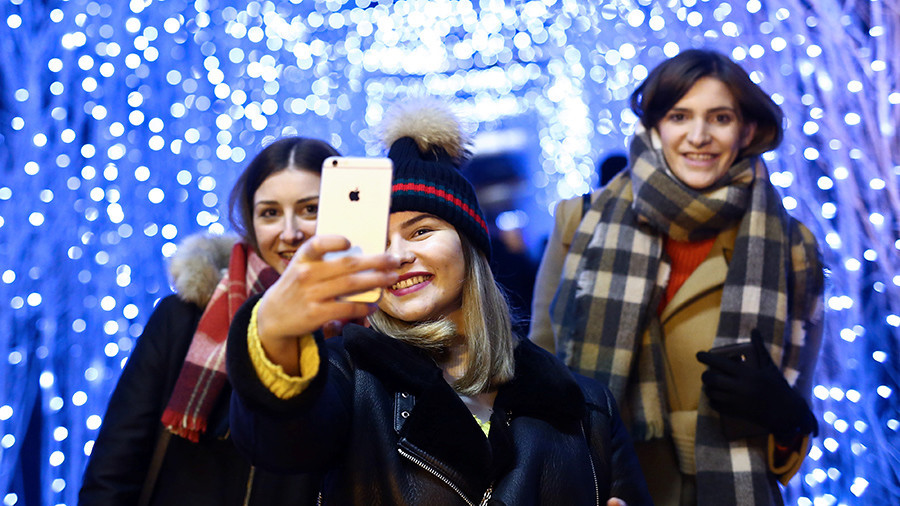‘Selfitis’ could be sign of mental illness ‒ study

Researchers say “Selfitis,” the obsessive taking of selfies on mobile phones, is a real thing, and that taking six or more selfies a day could be a sign of chronic mental illness.
The study, by researchers at Nottingham Trent University and the Thiagarajar School of Management in India, explored the concept and collected data on the existence of selfitis. They developed a “Selfitis Behavior Scale,” with three levels: borderline, acute and chronic.
Griffiths and Balakrishnan’s study began as an investigation into the phenomenon of selfie-taking, after a hoax story appeared in 2014 claiming that “selftis” had been classed as a mental disorder by the American Psychiatric Association. The article argued the desire to take photos of one’s self and post them on social media was “a way to make up for the lack of self-esteem and to fill a gap in intimacy.”
Scientists began with a focus group interview with 225 university students in India to create the scale, and validated the results by using 400 students. Of the group, 230 were male and 170 were female. The majority were between the ages of 16 and 25.
Students were asked a series of questions, and their responses were used to grade them on the Selfitis Behavior Scale. Among the questions were:
Among the questions were:
Taking selfies gives me a good feeling to better enjoy my environment
Sharing my selfies creates healthy competition with my friends and colleagues
I gain enormous attention by sharing my selfies on social media
I feel more popular when I post my selfies on social media
By posting selfies, I expect my friends to appraise me
When I don’t take selfies, I feel detached from my peer group
I take selfies as trophies for future memories
I use photo editing tools to enhance my selfie to look better than others
Six motivating factors were identified, with “selfitis” sufferers typically seeking to increase their self-confidence, seek attention, improve their mood, connect with the environment around them (to create a record of memories), increase their conformity with the social group around them and be socially competitive.
The prevalence of these factors determined the level of selfitis severity.
“This study arguably validates the concept of selfitis and provides benchmark data for other researchers to investigate the concept more thoroughly and in different contexts,” says the paper, authored by Dr Mark Griffiths, of Nottingham Trent University, and Madurai-based Janarthanan Balakrishnan. The paper was published in the International Journal of Mental Health and Addiction.
Survey results showed that 136 students, or 34 percent, were “borderline” on the behavior scale. Another 162 students, or 40.5 percent, fell into the “acute” category, while 102, or 25.5 percent, were classified as “chronic.”
Of the test group, over half took one to four selfies a day. Just over a third took five to eight selfies a day, and about 10 percent were taking eight or more selfies a day. Thirty-four percent of the test group posted nothing on social media, 40 percent posted at least one to three times a day, and 25 percent posted more than three times a day.
Ever since Dr. Griffiths published a paper on “technological addictions” in 1995, there has been a marked increase in research into addiction to the internet, online games, mobile phones and social media.



